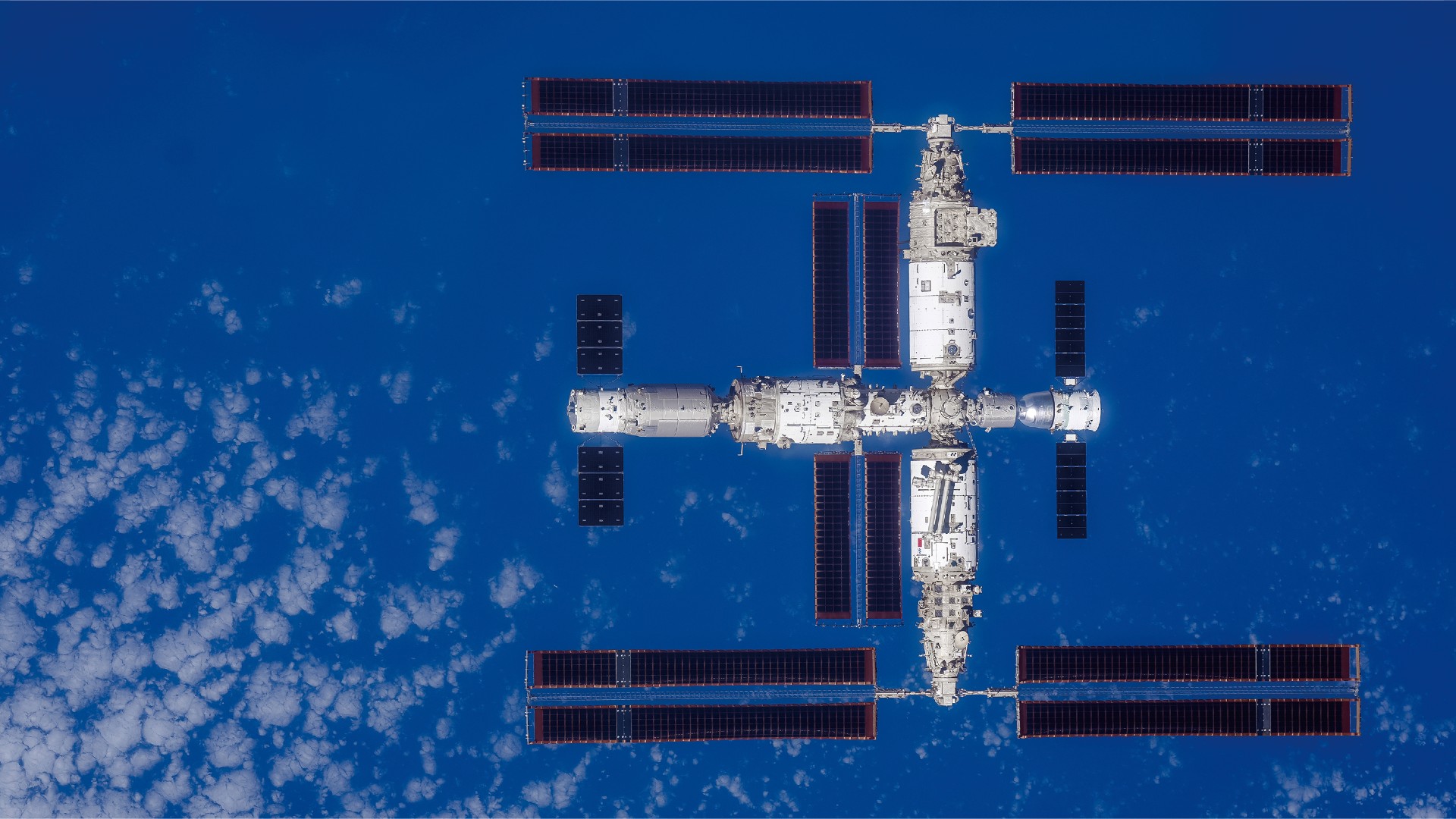
China's space station is set to host a scientific experiment aimed at assessing the viability of Earth's early life forms in a simulated cosmic environment.
China launched the Tianzhou 7 cargo spacecraft on a Long March 7 rocket from Wenchang Satellite Launch Center on Jan. 17. It arrived at Tiangong space station just over three hours later, successfully docking with the core module.
And among the 250 cargo packages, totaling around 12,350 pounds (5,600 kilograms), is an experiment carrying archaea, a domain of single-celled organisms and one of Earth's oldest lifeforms.
The anaerobic archaea in question for the experiment consume hydrogen and carbon dioxide, in turn producing methane as a waste product. In fact, archaea are a major contributor to our planet's atmospheric methane.
Related: How to see and track the Tiangong Chinese space station
Once aboard Tiangong, the anaerobic archaea will undergo scientific testing to assess their ability to survive in the simulated atmospheric environment of Mars as well as extreme conditions like cosmic radiation, according to CCTV. The experiments aim to provide valuable insights into the fundamental question of whether life exists beyond Earth.
"We have selected these anaerobic archaea and sent them to the platform of the Chinese space station. By utilizing the space station's exposed conditions of cosmic radiation, along with the microgravity environment and other extreme factors such as temperature, we aim to verify whether this early-life form on Earth can survive in such conditions," Liu Zhu, professor of the Department of Earth System Science at Tsinghua University, told CCTV.
The presence of methane on Mars is a hot topic as it's considered a possible biosignature. Both NASA’s Curiosity rover as well as other orbiters, including Europe's Mars Express, have detected methane in the Red Planet's atmosphere, but it is not yet known if these readings are the results of geological processes or indeed biological ones.
"If these methanogenic bacteria can survive in the simulated environment and demonstrate robust growth while producing methane, it would substantiate the notion that primitive life forms on Earth can indeed survive and even thrive in extraterrestrial conditions," Liu said.
"This outcome would offer a profound revelation for us: if methane discovered on Mars is potentially originated from life, it suggests the possibility of a common origin between Martian life and life on Earth," he said.
It will not be the first time archaea have been exposed to space conditions, however, as earlier such experiments have been sent to the International Space Station. These experiments were likewise interested in the ramifications for the search for potential extraterrestrial habitability and life.







